Archive for June, 2015
Akram Zaatari at Moderna Museet

“Unfolding” – the solo show by the Lebanese artist Akram Zaatri on Vimeo at Moderna Museet, Stockholm consists of written documents, videos, films and photographs that appear to capture memories and observations of his city Saida.
In the initial gallery, a film opens with a pair of hands typing on a Mac laptop. From the keyboard and hands, the film cuts to two men sitting in a dark room looking down at the Apple laptop (perhaps the artist and his father). The man on the right is middle aged wearing a charcoal hoody with a Japanese geisha and gambling cards. He is typing into the computer. To his right is a little old man wearing a white shirt, a tie, a sweater or scarf and a warm black jacket and black hat. As the man on the right stops typing, he leans back; they both wait staring at the glowing screen. A white light behind them to their right shoots across the room. The white light is reminiscent of a film projector. As the two men continue to watch the computer screen, colored lights alternate in the background – blue, red and yellow. At one point the lights dance about as in a discotheque. Eventually, the room goes black and the film ends.
I imagine that the film portrays the cinematic experience enjoyed through streaming video as most people enjoy films today. I did not catch what the fingers at the beginning of the film typed, perhaps YouTube. As simple as the film is, it has an elegance, an elegance that persists throughout Akram Zaatari’s exhibition “Unfolding” at the Moderna Museet.
Adrián Villar Rojas at Moderna Museet
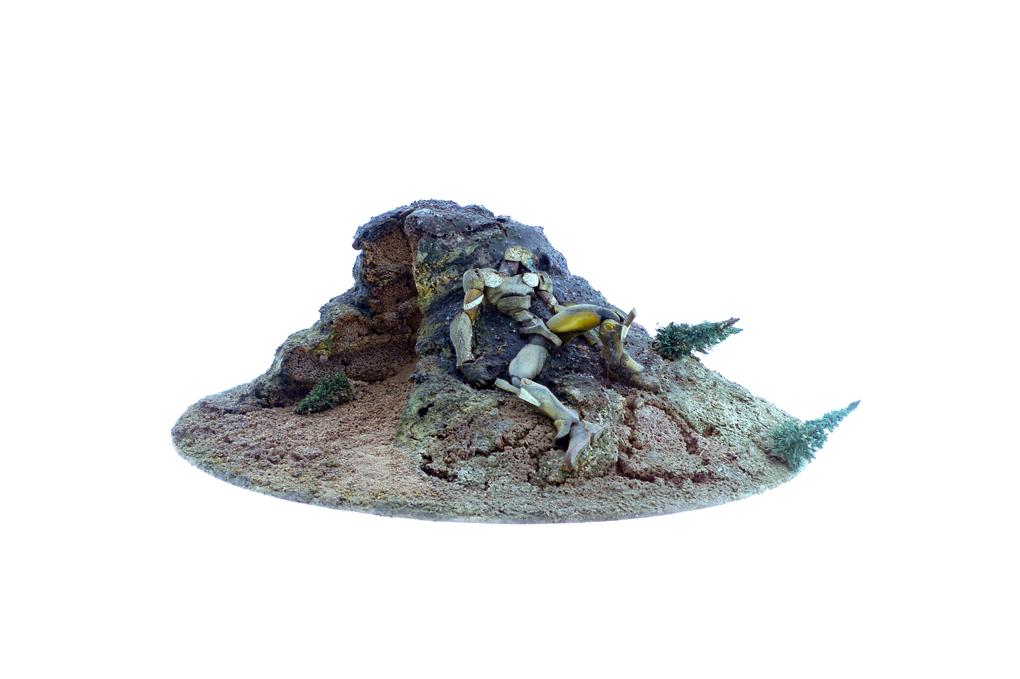
Adrián Villar Rojas at Moderna Museet in Stockholm
While seeing Adrián Villar Rojas’s “Fantasma” exhibition at Moderna Museet in Stockholm, I was immediately reminded of Gabriel Orozco. The work, the objects, the installation and presentation were a second coming of Orozco’s efforts, however, unfortunately much more affected.
With Orozco’s work, I tend to be presented with a sense of discovery by mistake or happenstance. Many of Orozco’s photographs document a visually engaging observation that is about to fade or capture a playful intervention. And the objects as well, may be found objects with slight interventions or playful ideas that have been produced at human scale. Although Villar Rojas’s objects harken to Orozco’s sculptures, they appear entirely artificial and do not have a sense of playful discovery. They seem entirely manipulated and in the end not very interesting or engaging.
I wish that the large installation of objects were all in the vein of the defeated Robotech diorama in the stark white space preceding the larger hall (pictured above). At least this piece has more fun with the Fine Art museum setting than the pretentious tall island of stuff in the main gallery.

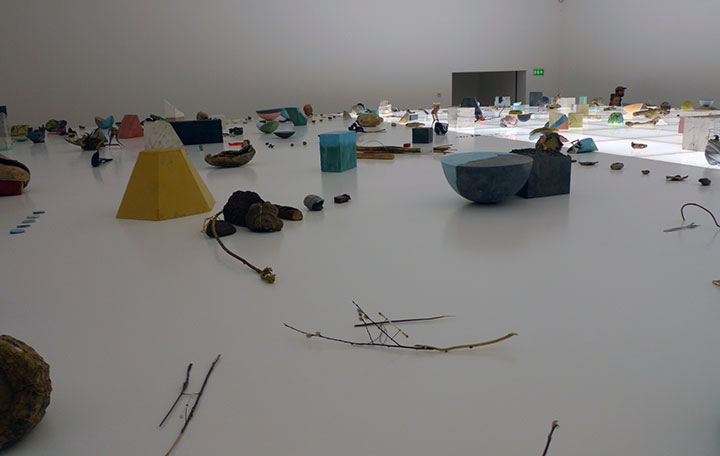
The museum presents an interview with Adrián Villar Rojas in which he unfortunately comes across as a bit pretentious. I’ll be surprised if this work is worth restoring and preserving.
Art in Copenhagen’s Meat Packing District
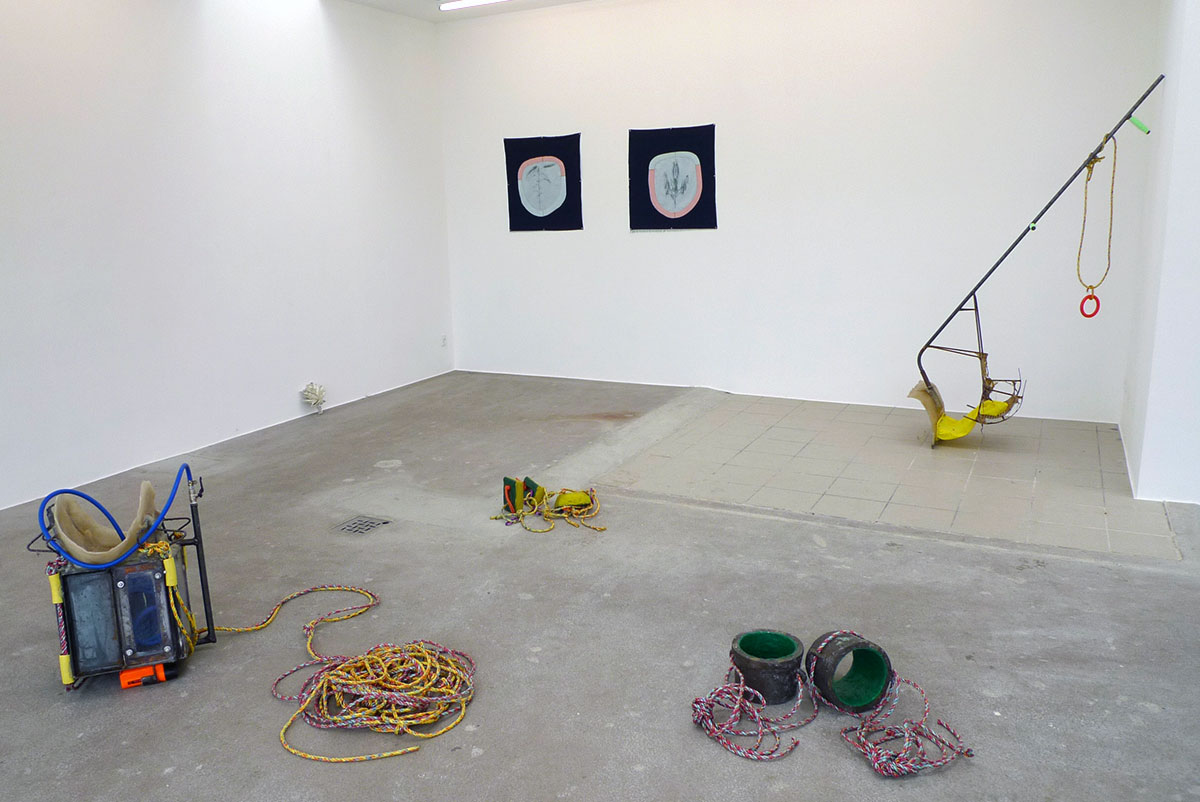
Sculptures by Emil Toldbod at Gether Contemporary
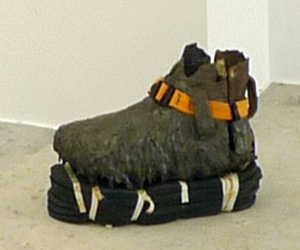 Gether Contemporary’s “Beneath the Surface” features the work of five young artists from the Royal Danish Academy of Fine Arts; Esben Gyldenløve, Oskar Jakobsen, Christine Overvad, Emil Toldbod and Nicky Sparre Ulrich. The only work that caught my imagination were the mixed-media sculptures by Emil Toldbod that comprise a series titled “Second Dive: Entering Another World”. Apparently the sculptures are employed in a film in which he wears and uses the sculptures to walk the surface of the sea digging through it’s ground. Below is what I imaging to be a test video in which he wears weighted boots to try and walk along the bottom of a swimming pool. The shoes in the video are pictured to the left.
Gether Contemporary’s “Beneath the Surface” features the work of five young artists from the Royal Danish Academy of Fine Arts; Esben Gyldenløve, Oskar Jakobsen, Christine Overvad, Emil Toldbod and Nicky Sparre Ulrich. The only work that caught my imagination were the mixed-media sculptures by Emil Toldbod that comprise a series titled “Second Dive: Entering Another World”. Apparently the sculptures are employed in a film in which he wears and uses the sculptures to walk the surface of the sea digging through it’s ground. Below is what I imaging to be a test video in which he wears weighted boots to try and walk along the bottom of a swimming pool. The shoes in the video are pictured to the left.
At the bottom left of the image is a helmet that Emil wears in his film and to the right is a shovel that he pushes along the sea’s bottom. To the right of the helmet, are concrete rings that he wears on his thighs and in the back concrete weights that he drags along to help him remain below the water surface. The sculptures immediately brought to mind the literary genre Speculative Fiction as the artist crafted survival tools from found objects to allow him to trove the bottom of the sea after the waters have risen over much of the continents. These are make-shift tools assembled and crafted by impoverished survivors of a not so distant future that will help them continue living from the debris of past civilization. As I know nothing about the film or “Second Dive: Entering Another World” other than seeing a few sculptures on view at Gether Contemporary and a still on the Gether site, I’m just making all this up in contemplating Emil Toldbod’s work.
1. Første skridt i min søgen efter det omvendt drejede sneglehus. from Emil Toldbod on Vimeo.
Above Gether Contemporary in Copenhagen’s Meat Packing district is Galleri Bo Bjeggard where I enjoyed the whimsical exhibition “Flowers for Poul” (PDF catalog for “Flowers of Poul”). “Flowers for Poul” celebrates the 90th birthday of deceased artist Poul Gernes by presenting the work of John Armleder, Cosima von Bonin, Paul Fagerskiold, Callum Innes, SUPERFLEX, Janaina Tscape and Eriwn Wurm as well as work by Poul Gernes. Flowers for Poul The exhibition is beautifully installed and visually engaging as large colorful works keep the viewer engaged from room to room. The works that stood out to me are SUPERFLEX’s “Information Machine” and “Commons Machine”. Although these pieces are simple and don’t function very well, particularly the make shift tops of “Information Machine” the pieces allow for simple interactivity that inanely reflect on our networked society.
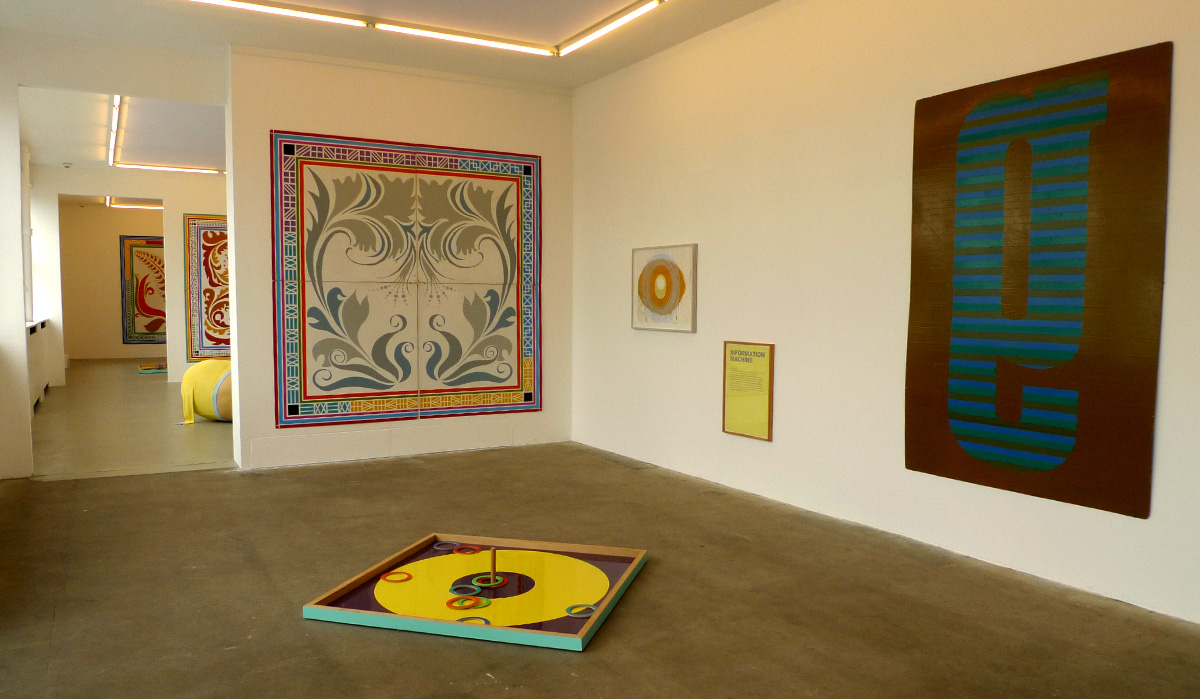
SUPERFLEX’S “INFORMATION MACHINE” “models the struggle between the desire to share information and the desire to contain information. Player A (represents the desire to share information) plays against Player B (represented by the pole in the middle) to choose between sharing information or containing information. The player with the most rings on the pole wins. If there are no rings on the pole the people do not have to choose between sharing information or containing information. The game is endless.” As described by SUPERFLEX, the players are our desire to share as well as contain information and their goal is to have us engage.
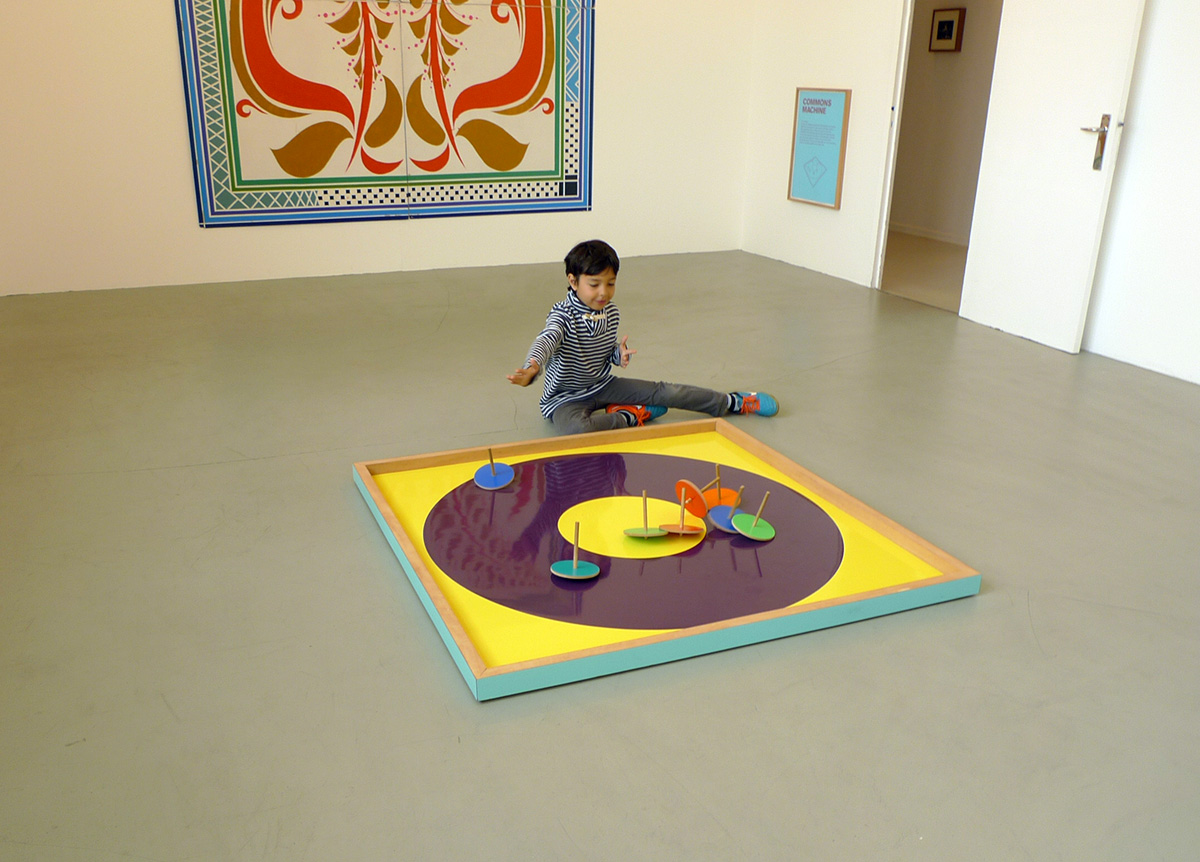
COMMONS MACHINE, I would enjoy a lot more if the tops actually worked. Built for 2-10 players acting as “software programmers are working together to develop an open-source system. The programmers are contributing by launching their SPINNING TOPs with open source codes (the spinning top). The source code must not end up in the proprietary domain area (the yellow area) but remain in the common area (the purple area). If any source code ends up in the proprietary area, the operating system is no longer free.” Unfortunately, the tops don’t really spin, it’s art.
From Bo Bjerggaard we walked over to V1 Contemporary Art Center which featured the art of two artists who began their careers as grafiti and tag artists in the Eighties – Barry McGee and Todd James. Their work is well documented and critiques, so I’m only including a few images more so for my own visual archive. I love Barry McGee’s patterns and the simplicity of Todd James’s fantasy drawings in his zine “Beyond the Gates” of viking-like warrior women.
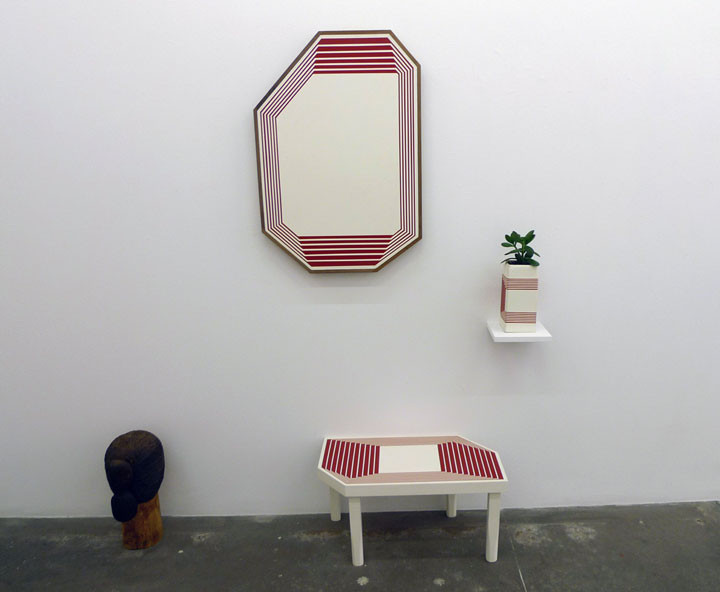
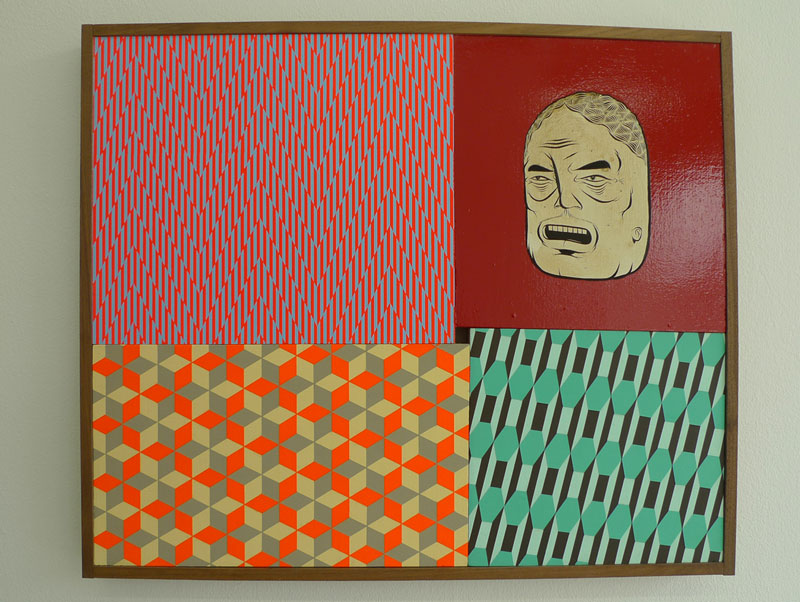
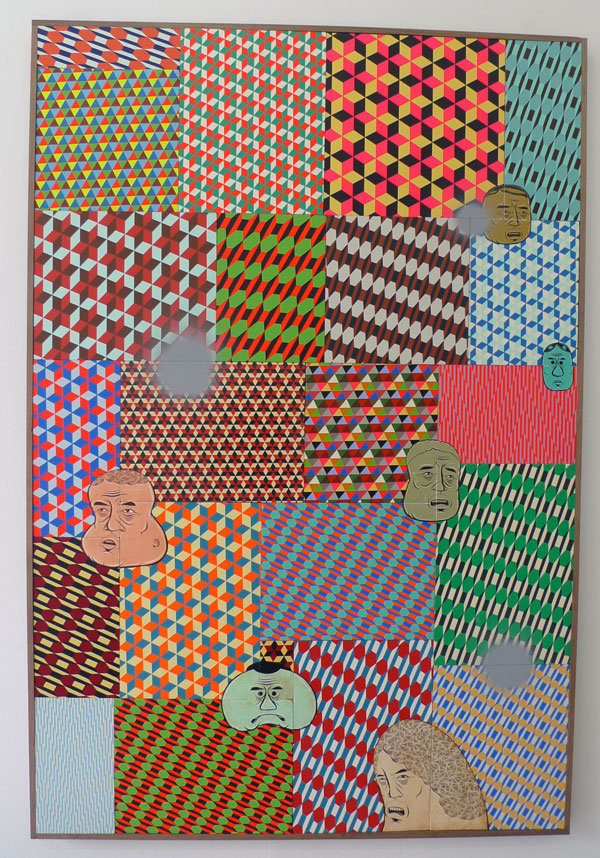
Todd James’s drawings are powerful in their printed comic format, I do not find the paintings at all interesting.
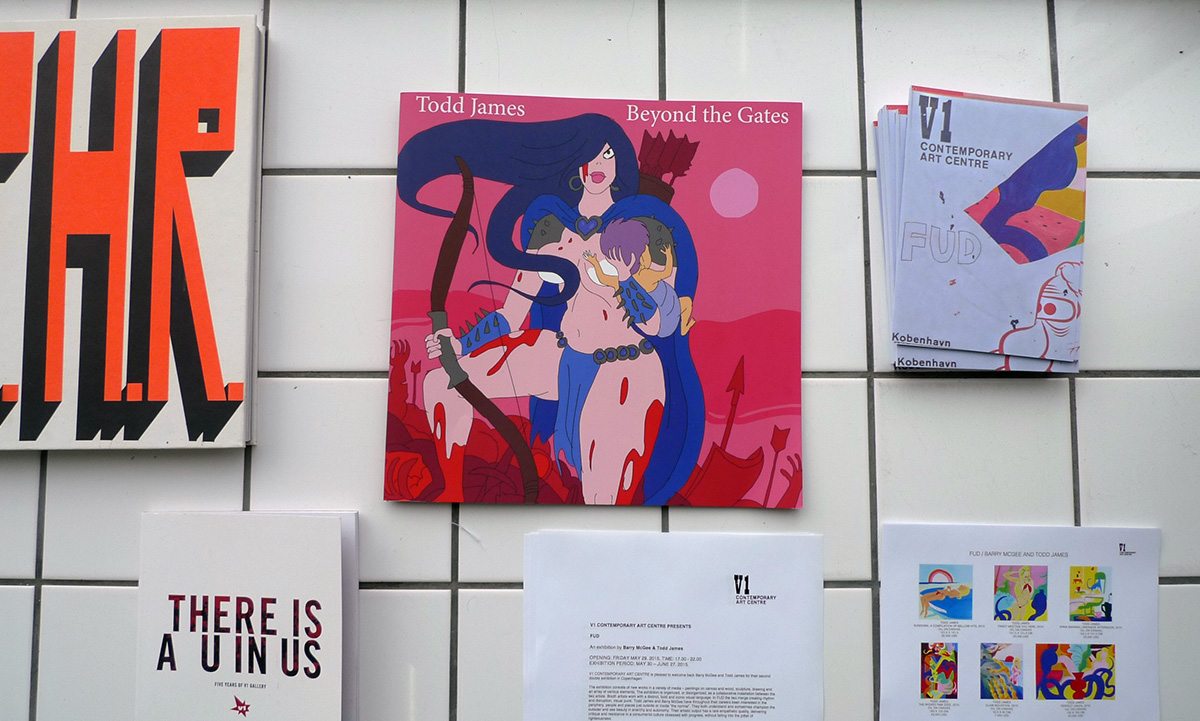
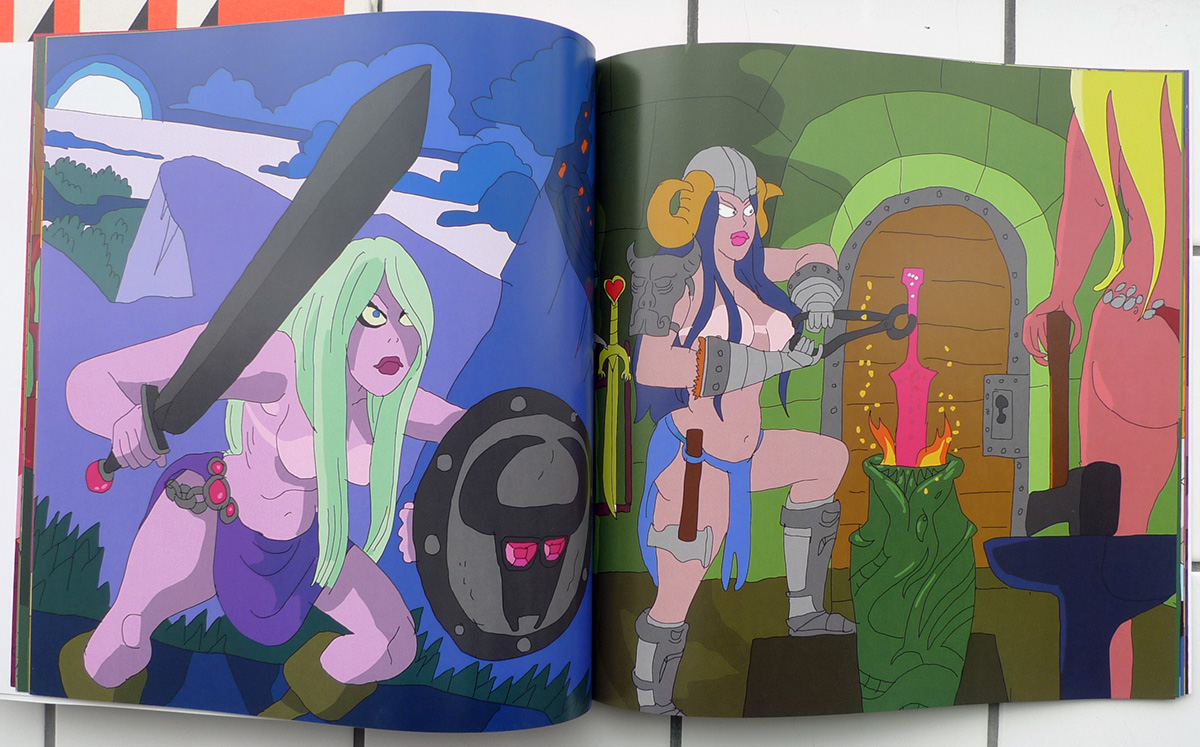
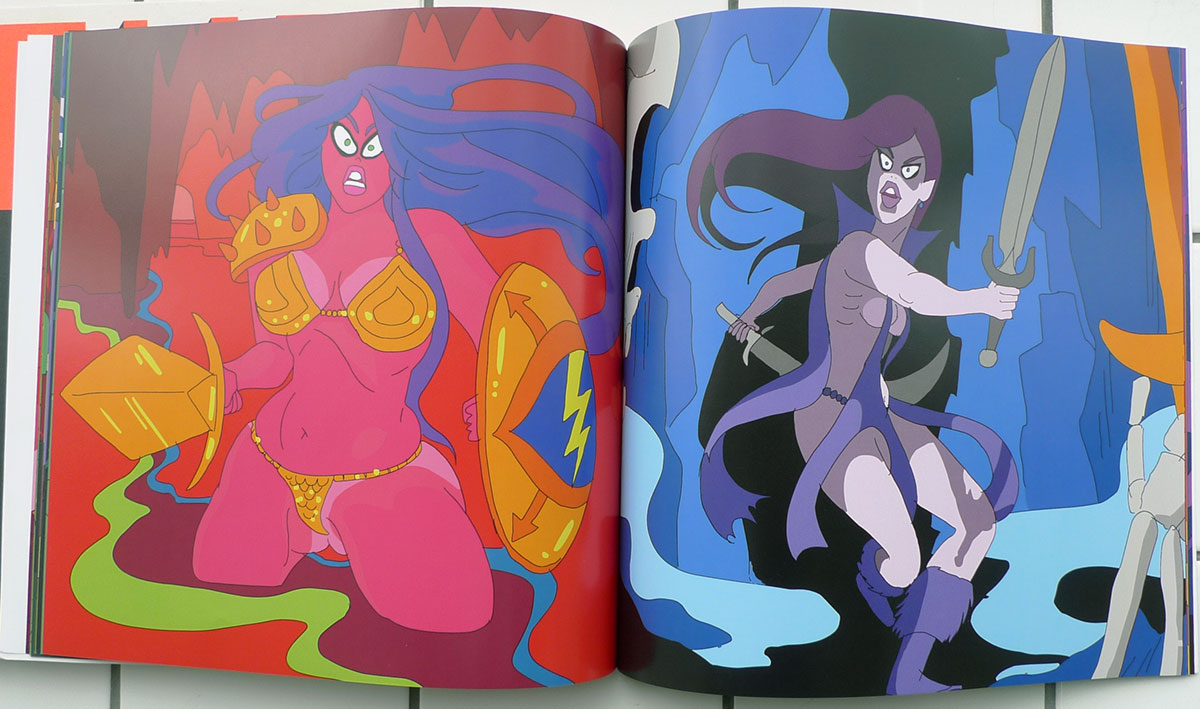
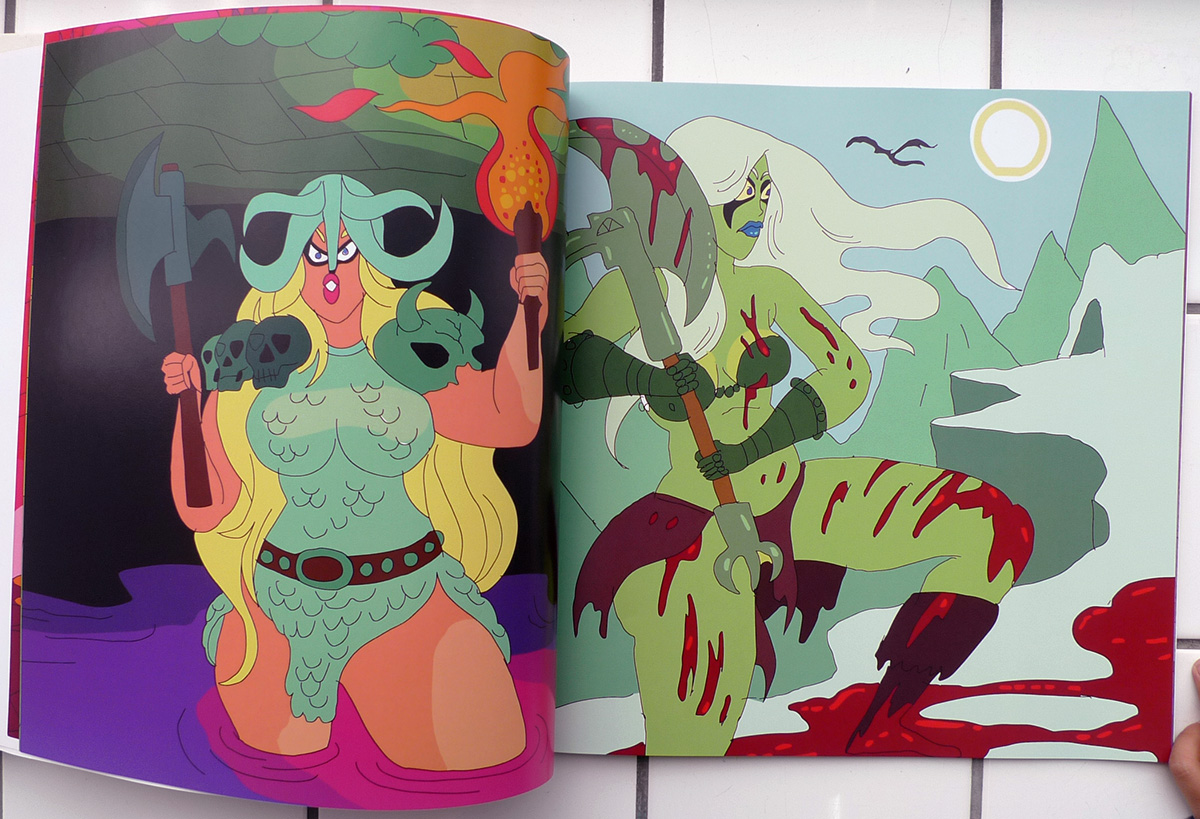
Boring…
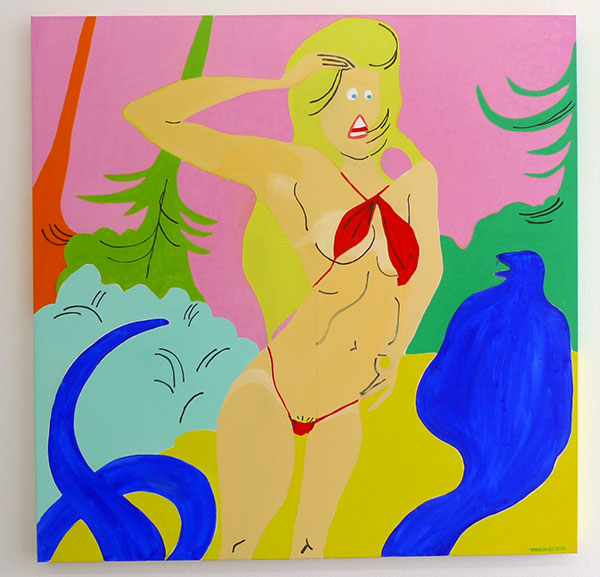
Galleri Specta in Copenhagen
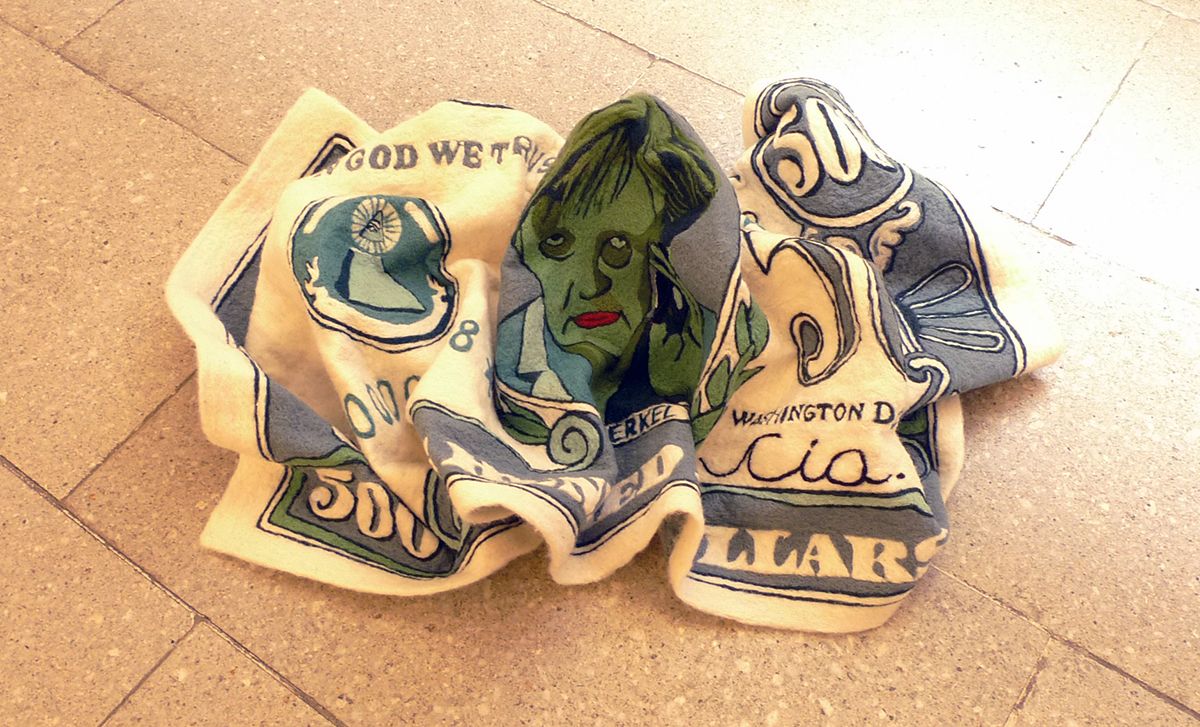
Crumpled $500 bill featuring Angela Merkel made from felt by artist Andreas Schulenberg
Today, my second day in Copenhagen, art work in the gallery Specta caught my eye while wandering about the city, so my son and I walked in. The gallerist immediately greeted us and even gave us a tour of the show (as a New Yorker, I was immediately taken aback). The woman explained that the exhibition titled “Money Makes the World Go Round” (May 9 – June 13, 2015) features four international artists that use money as the subject of their work. All of them with a critical bend toward the power of money and yet featured in a swank art market gallery, of course.

Money Makes the World Go Round II by Carlos Aires
The central piece upon walking in to the space is “Money Makes the World Go Round II”, by Spanish artist Carlos Aires who cuts iconographic silhouettes from the currency of the 30 wealthiest countries to create a sphere strewn with what appear to be fruit flies. The sphere is formed by pining the cutout silhouettes and flies to a white canvas surface.
Also by Carlos Aires are a grid of collages that cut news print figures into the country’s currency.
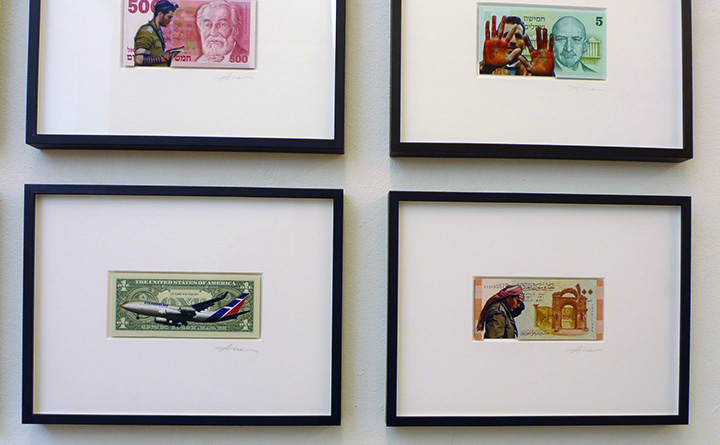
Money Collage by Carlos Aires
In his multi-tiled piece titled “Domino” Swedish artist Lars Arrhenius represents the flow of a piece of currency from an ATM withdrawal to any number of exchanges until it is redeposited in to a bank.
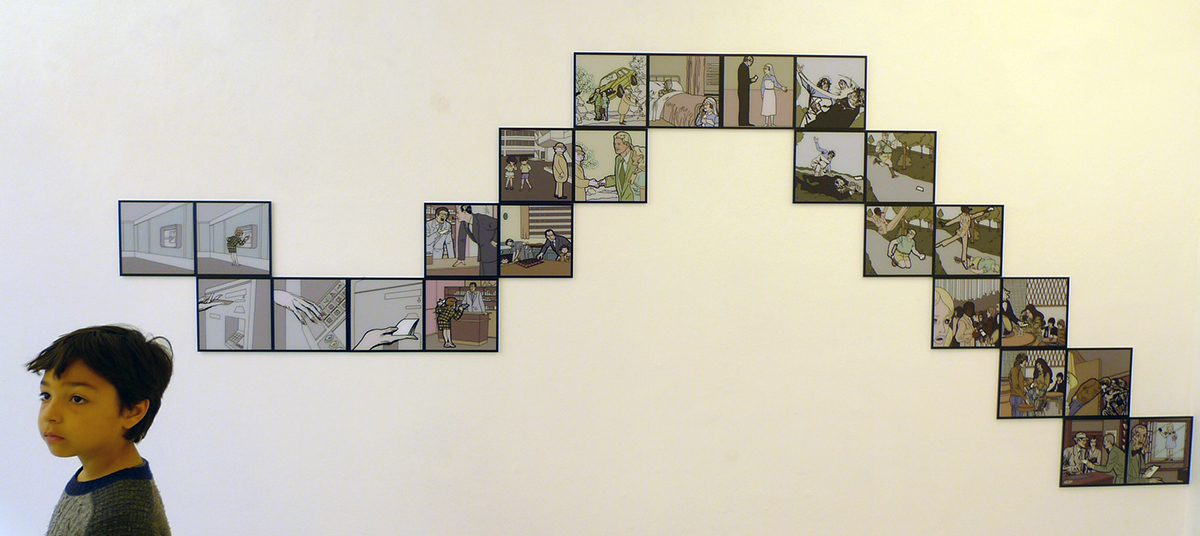
Domino by Lars Arrhenius
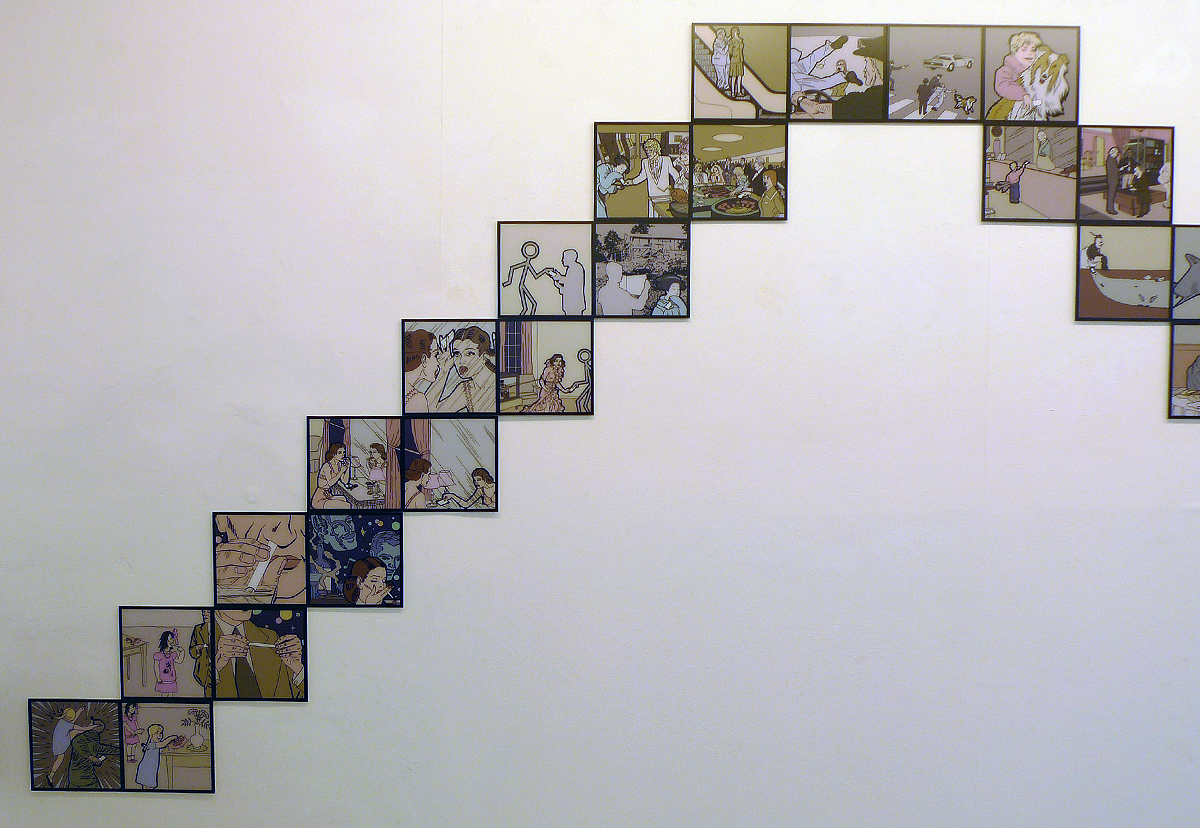
Domino by Lars Arrhenius
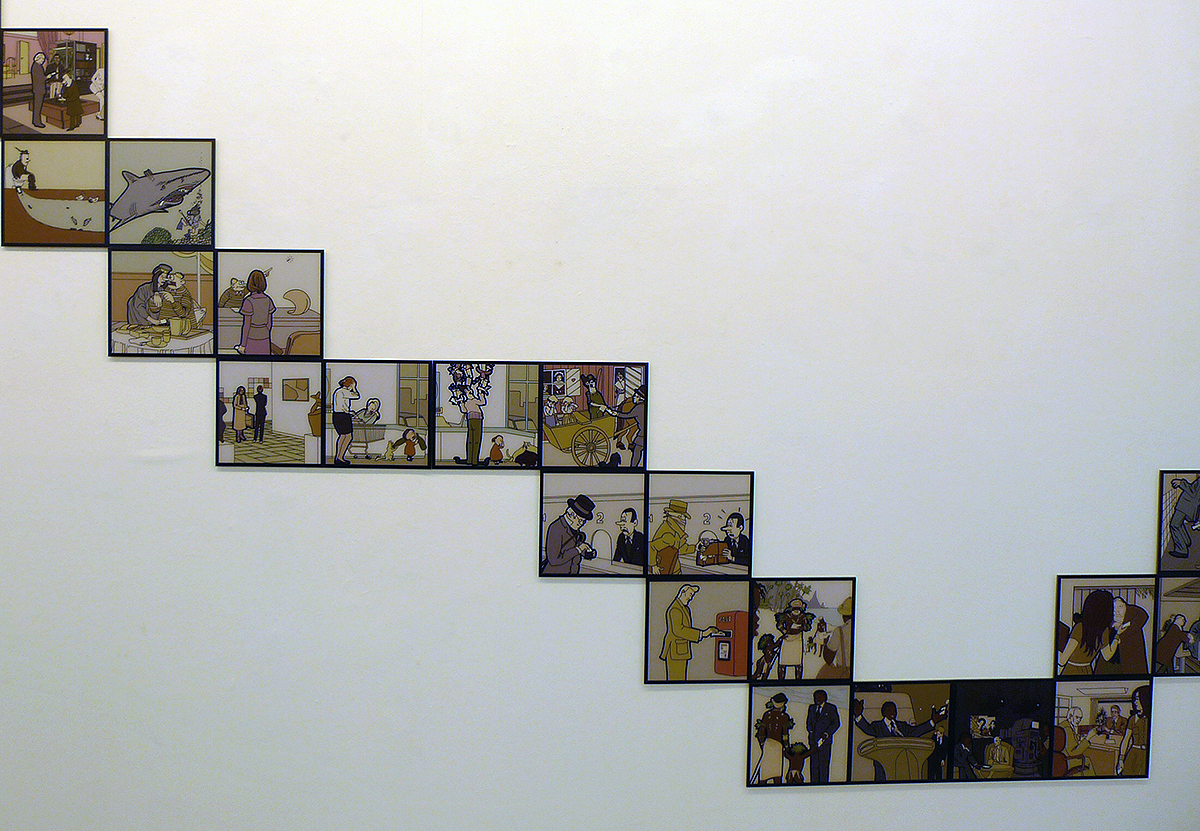
Domino by Lars Arrhenius
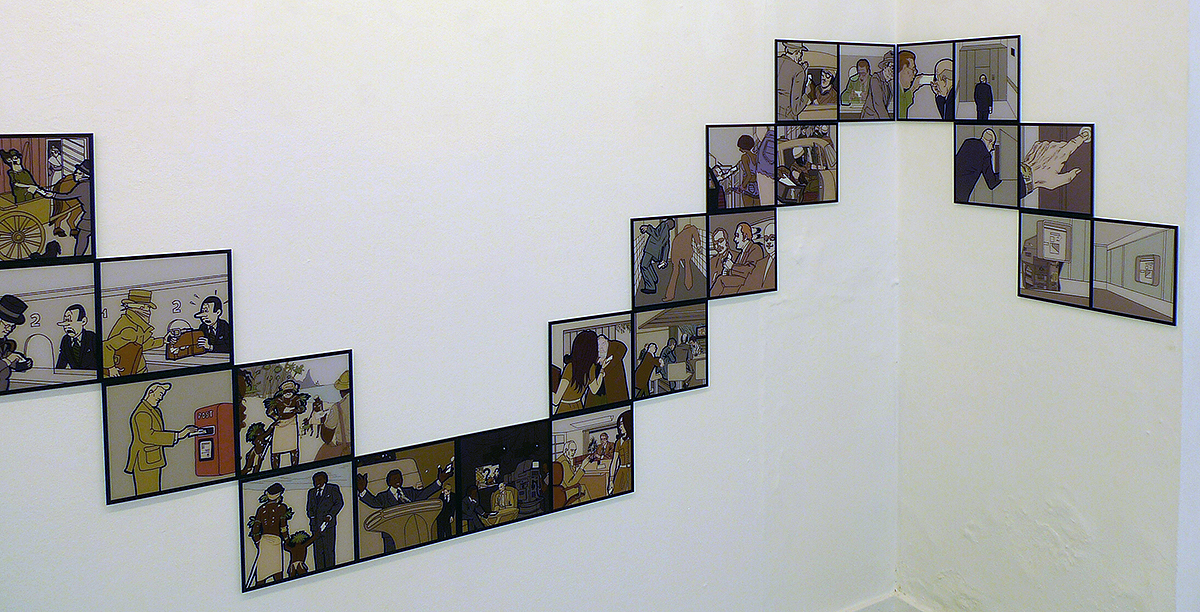
Domino by Lars Arrhenius
South African artist Frances Goodman has created bills from woven beads, beads once functioning as currency in various cultures. And in a separate series Goodman creates drawings from fake eyelashes.
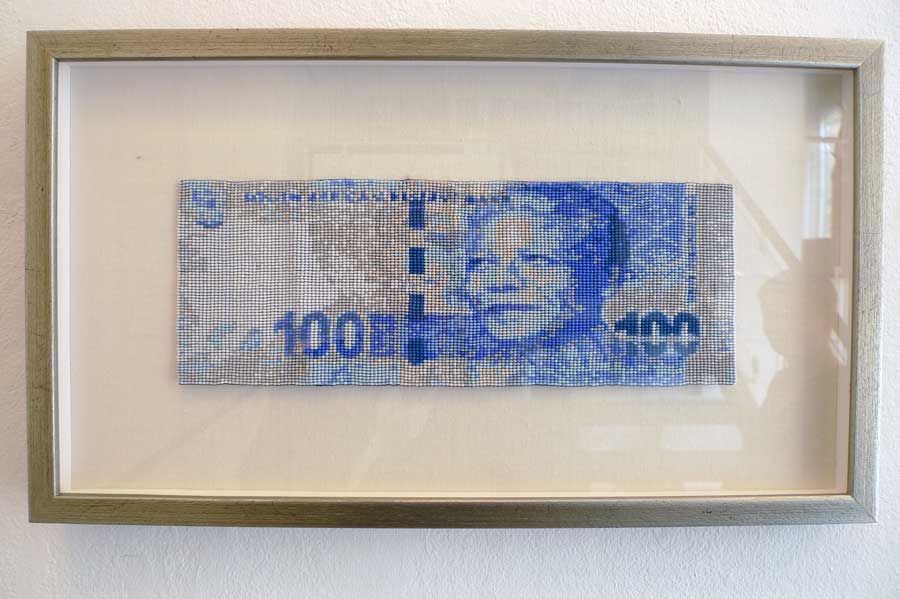
South African currency made from braided beads by Frances Goodman
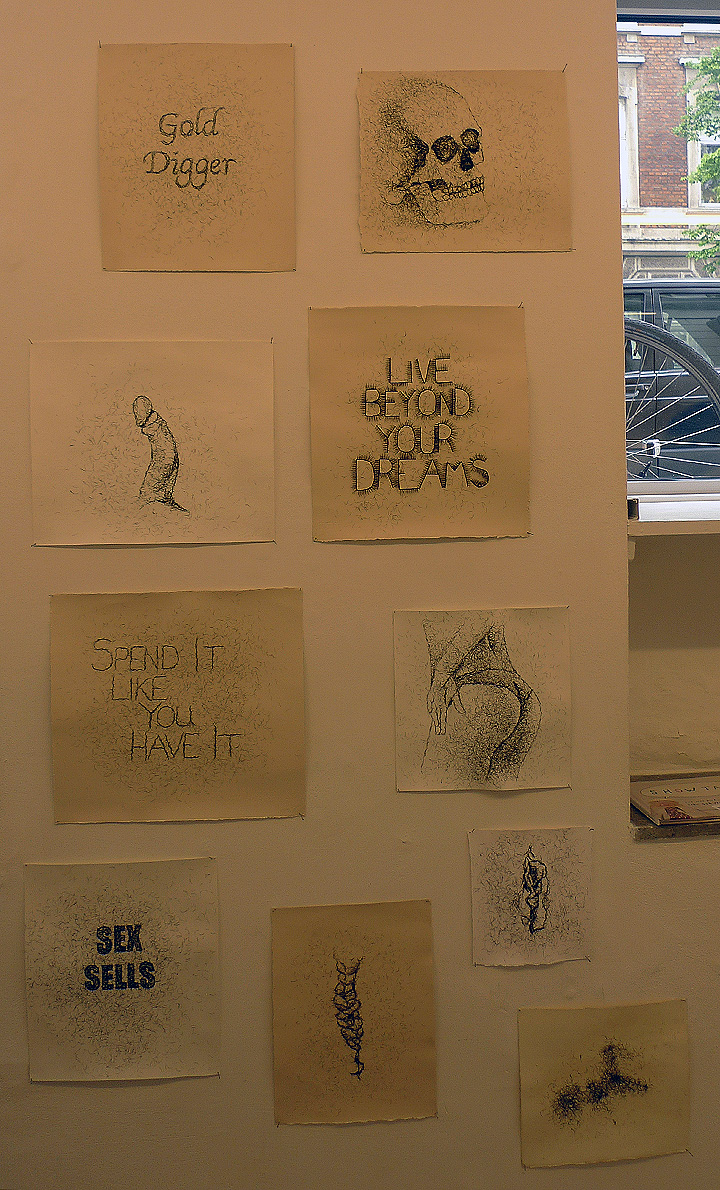
South African currency made from braided beads by Frances Goodman
My favorite and most striking work is by Danish/German artist Andreas Schulenberg who has created giant dollar bills from felt and in them replaced the portrait of a president with that of the “losers” in American society.
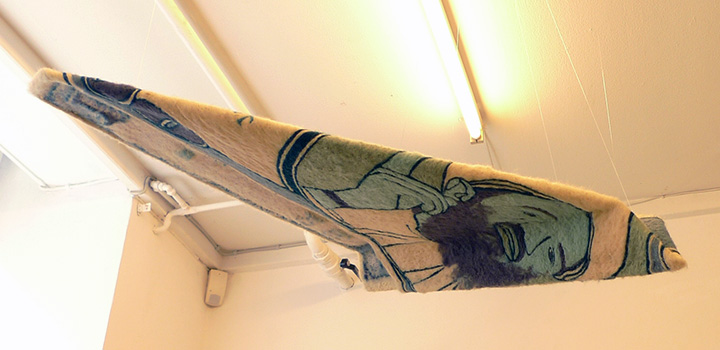
Paper airplane bill featuring Osama bin Laden made from felt by artist Andreas Schulenberg
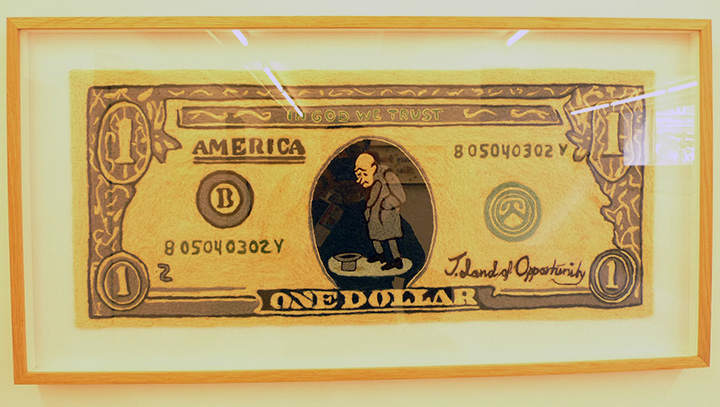
Dollar bill featuring poor man made in felt by artist Andreas Schulenberg
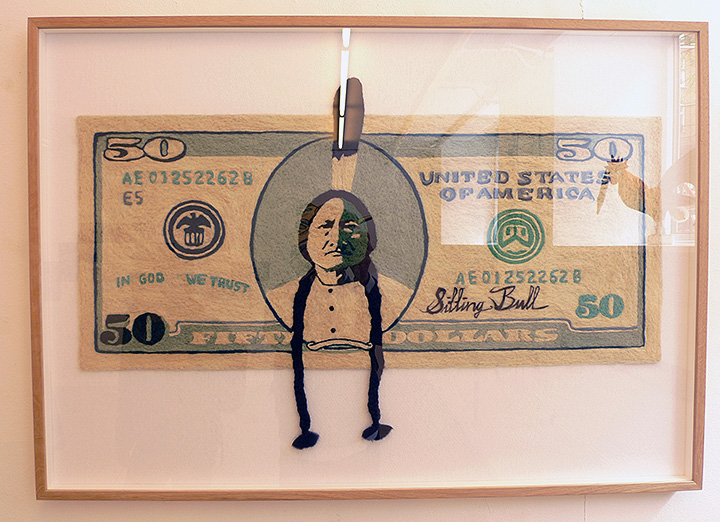
$50 dollar bill featuring Sitting Bull made in felt by artist Andreas Schulenberg
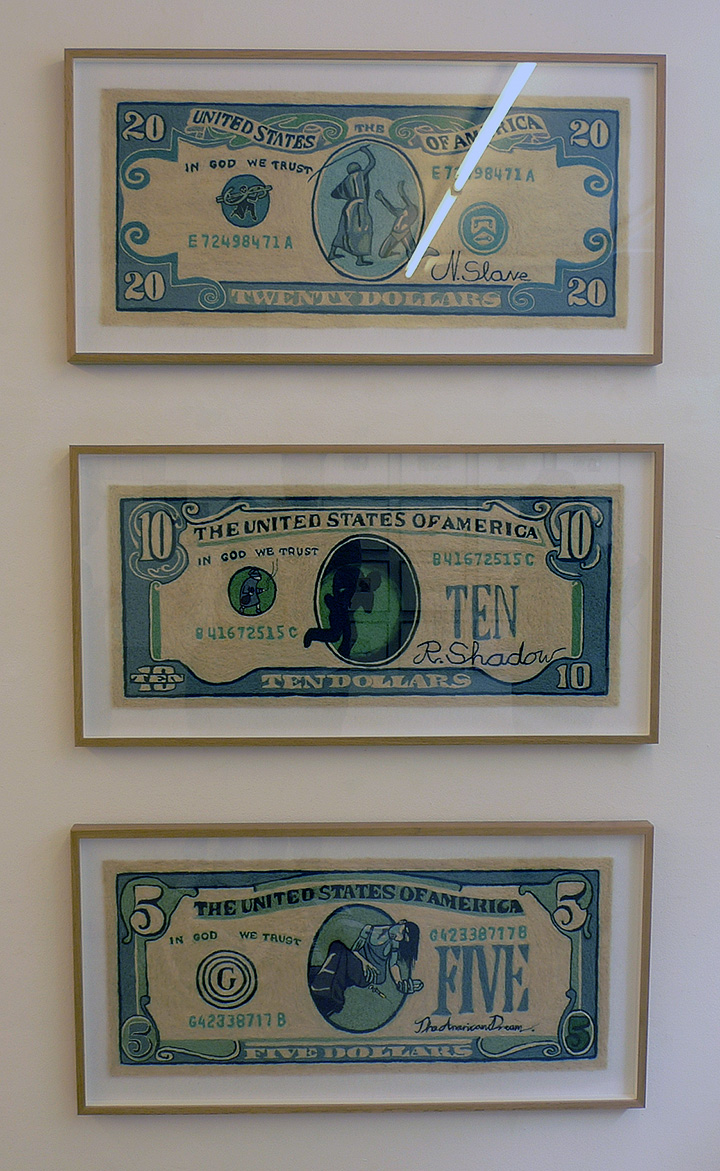
$20 – Slavery, $10 – Burglary, $5 – Drug Addiction bills made in felt by artist Andreas Schulenberg
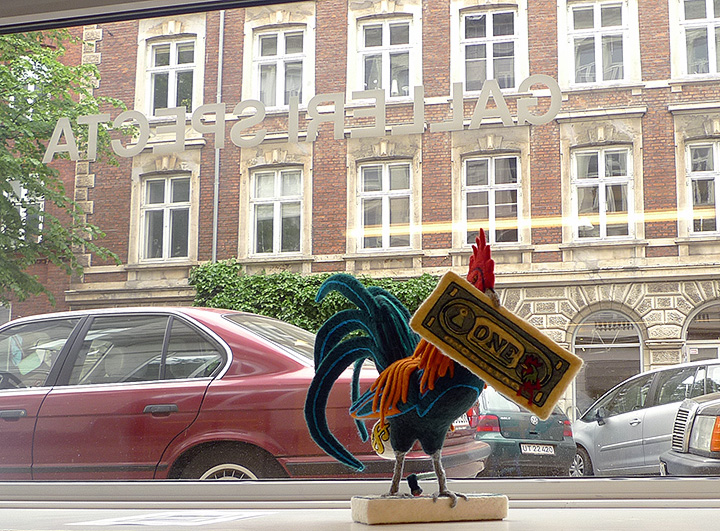
Felt chicken holding $1 bill while laying a money egg made in felt by artist Andreas Schulenberg